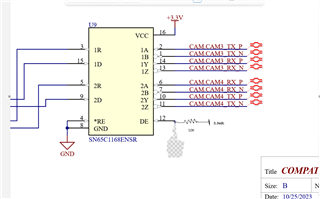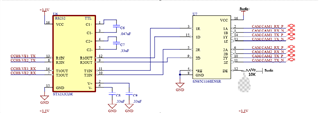Other Parts Discussed in Thread: AM26LV32E, AM26LV31E, THVD1424, THVD1451, THVD1452,
hi,
my previous designer created a project and placed a SN65C1168ENSR from rs422 conversion, but it is a 4.5 - 5vdc supply only, please correct me if i am wrong.
i don't have any 5vdc on my board, so i want to use a 3.3vdc support RS422 converter, i am looking for the recommendations.



